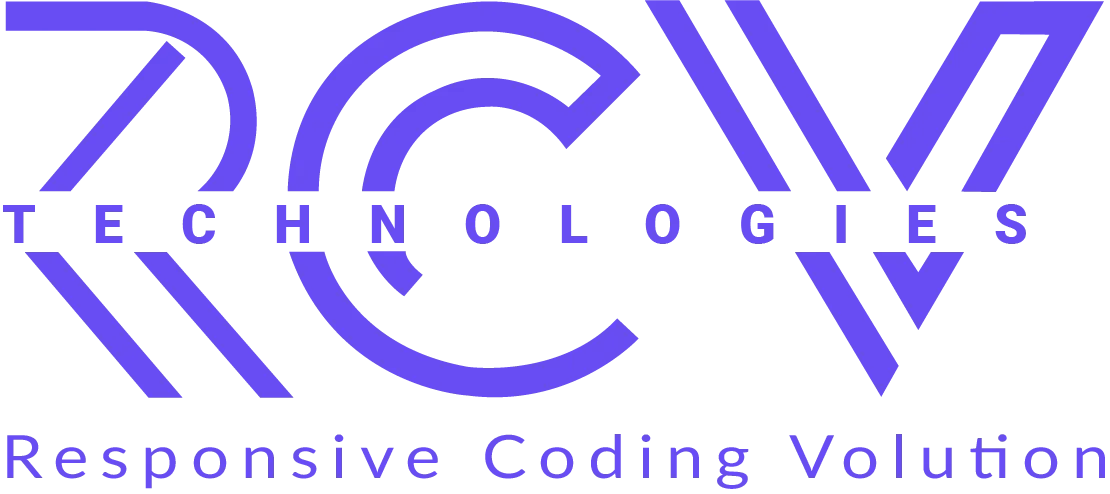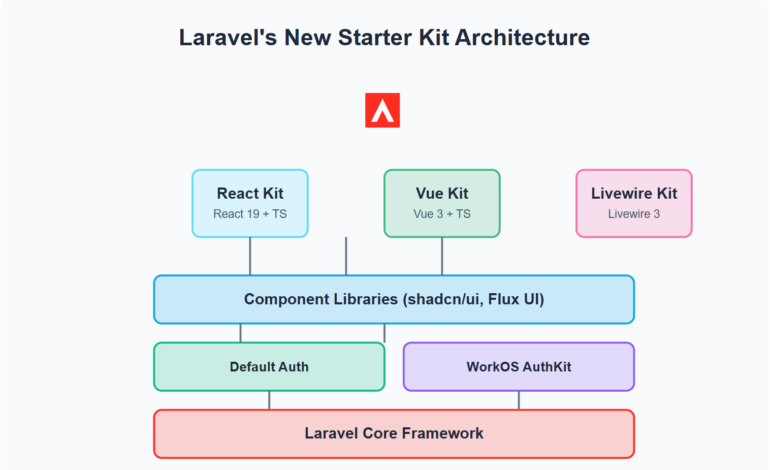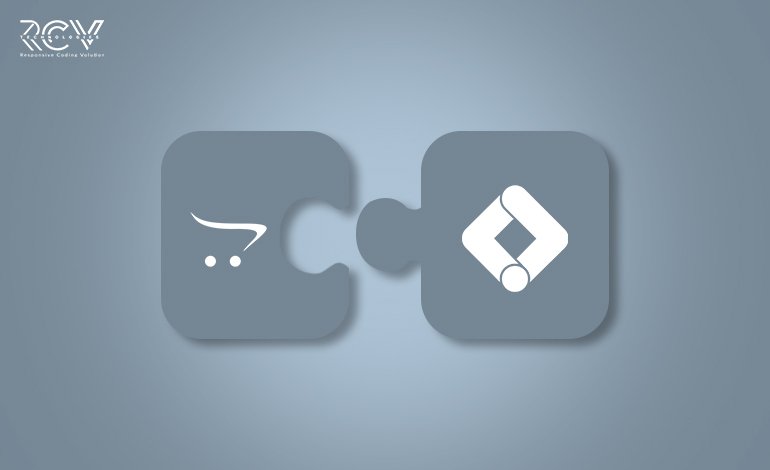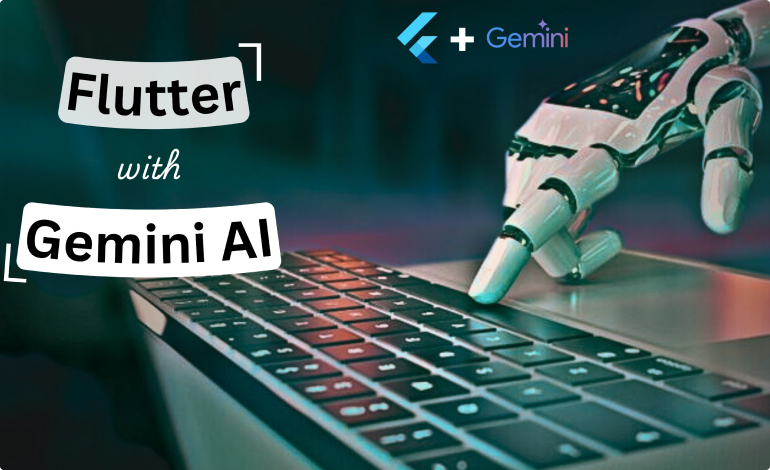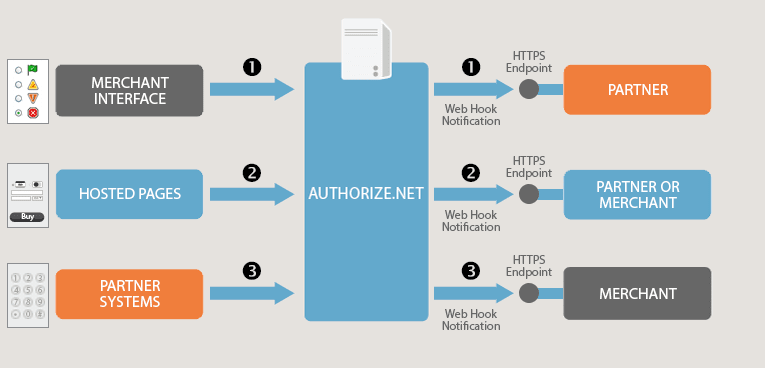Comprehensive Laravel Product Development Roadmap and Best Practices for 2025-2026
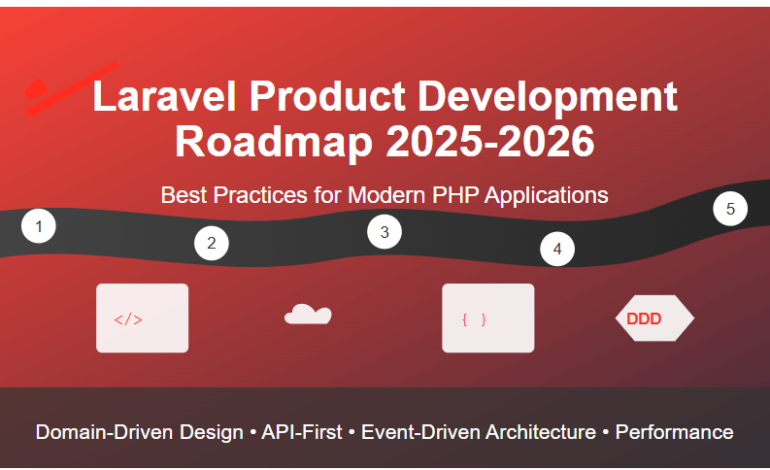
Comprehensive Laravel Product Development Roadmap and Best Practices for 2025-2026
Introduction to Modern Laravel Development
Laravel continues to evolve as one of the most powerful PHP frameworks for web application development. This comprehensive guide combines cutting-edge architecture best practices with a structured roadmap to help you develop scalable, maintainable, and high-performance Laravel applications that meet modern development standards while ensuring long-term sustainability.
Today’s Laravel applications demand:
- Cleaner code organization
- API-first approaches
- Scalable architectures
- Performance optimization
- Security by design
- DevOps integration
Phase 1: Project Planning and Architecture Design
Requirements Gathering and Analysis
- Document business requirements and user stories
- Define product features and prioritize using business value
- Create detailed acceptance criteria for each feature
- Establish technical requirements and constraints
- Identify potential scalability needs early
- Create user journey maps to visualize the complete user experience
- Develop technical specification documents with architecture diagrams
Architecture Selection
Based on your project’s complexity and scale, choose the appropriate architectural approach:
Traditional MVC Architecture
- Suitable for smaller applications with straightforward business logic
- Leverages Laravel’s built-in MVC structure for simple to moderate complexity
Domain-Driven Design (DDD)
For complex applications with rich business logic:
app/
├── Domains/
│ ├── User/
│ │ ├── Actions/
│ │ ├── Models/
│ │ ├── Policies/
│ │ └── Repositories/
│ ├── Order/
│ │ ├── Actions/
│ │ ├── Events/
│ │ └── Listeners/
│ └── Payment/
│ ├── Services/
│ └── DTOs/
This organization reflects business domains rather than technical layers, making code more maintainable as applications grow.
Modular Monolith vs. Microservices
- Modular Monolith: Start with a well-organized monolith using Laravel Modules, with clear boundaries between features
- Consider Laravel Packages for reusable components
- Use namespace separation for module isolation
- Microservices: For very large applications or teams, consider a microservices approach with separate Laravel applications communicating via APIs
- Implement service discovery mechanisms
- Consider API gateway patterns for unified client access
Database Design
- Create comprehensive ERD (Entity Relationship Diagrams)
- Plan database migrations carefully
- Design with scalability in mind (consider sharding for very large datasets)
- Establish naming conventions for database objects
- Implement database versioning strategy
- Plan for data partitioning and archiving strategies for long-term data growth
- Consider multi-tenancy requirements early if applicable
Phase 2: Setting Up Development Environment
Environment Configuration
- Use Laravel Sail or Docker for containerized development
- Configure environment variables properly (.env files)
- Set up version control (Git) with proper branching strategy
- Implement automated deployment pipelines (CI/CD)
- Create development, staging, and production environment configurations
- Implement infrastructure as code using tools like Terraform
- Set up monitoring and logging infrastructure
Project Foundation
- Install Laravel via Composer
- Configure database connections
- Set up authentication system
- Implement basic logging and error handling
- Configure cache and session management
- Implement API rate limiting and throttling
- Set up CORS policies for cross-origin requests
- Configure HTTP security headers
Phase 3: Core Development
Implementing Domain Logic
When using Domain-Driven Design (recommended for 2025-2026):
- Create domain models that represent business entities
- Implement repositories for data access abstraction
- Develop service layers to encapsulate business logic
- Use Actions for single-responsibility operations
Example of a clean Action pattern:
// Instead of bloated controllers:
public function store(CreateUserRequest $request) {
return CreateUserAction::execute($request->validated());
}
// Action class:
class CreateUserAction
{
public static function execute(array $data)
{
$user = User::create([
'name' => $data['name'],
'email' => $data['email'],
'password' => Hash::make($data['password']),
]);
event(new UserCreated($user));
return $user;
}
}
Advanced Action Pattern with Dependency Injection:
class CreateUserAction
{
public function __construct(
private UserRepository $userRepository,
private EventDispatcher $eventDispatcher
) {}
public function execute(CreateUserDTO $data): User
{
$user = $this->userRepository->create([
'name' => $data->name,
'email' => $data->email,
'password' => Hash::make($data->password),
]);
$this->eventDispatcher->dispatch(new UserCreated($user));
return $user;
}
}
Route Management
Proper route organization is crucial for maintainable applications:
- Route Groups and Prefixes: Group related routes together with meaningful prefixes
Route::group(['prefix' => 'admin', 'middleware' => 'auth'], function () {
// Admin routes
});
- Route Namespaces: Organize controllers in namespaces for cleaner organization
Route::namespace('Admin')->group(function () {
// Controller methods resolved from Admin namespace
});
- Route Caching: Improve performance by caching routes in production
php artisan route:cache
- Resourceful Routing: Use resourceful routes for CRUD operations
Route::resource('posts', 'PostController');
- Route Model Binding: Leverage Laravel’s route model binding for cleaner controller methods
public function show(Post $post) {
// $post is automatically resolved
}
- Route Domain Organization: Organize routes by domain for clearer separation
// routes/domains/user.php
// routes/domains/order.php
// routes/domains/payment.php
API Development
Follow an API-First approach for modern applications:
REST API Implementation:
- Use Laravel API Resources for consistent JSON transformations
- Implement proper status codes and error responses
- Version your APIs (e.g., /api/v1/users)
- Follow JSON:API specification for standardized responses
- Implement API documentation with OpenAPI/Swagger
- Use API transformers for consistent response formatting
GraphQL for Complex Data Requirements:
- Implement using Lighthouse PHP for Laravel
- Define schemas for entities and relationships
- Create resolvers for custom data fetching logic
- Implement subscriptions for real-time data
- Use dataloaders for N+1 query prevention
Backend-for-Frontend (BFF) Pattern:
- Create specialized API endpoints for different clients (web, mobile, etc.)
- Optimize responses based on client needs
- Implement client-specific caching strategies
Authentication and Authorization
User Authentication:
- Implement Laravel Sanctum for SPA authentication
- Use Laravel Passport for OAuth2 implementation
- Consider JWT for stateless API authentication
- Implement multi-factor authentication (MFA)
- Support social login integration
- Add passwordless authentication options
Authorization:
- Implement policies for fine-grained access control
- Use gates for broader authorization checks
- Consider role-based access control (RBAC) for complex permissions
- Implement attribute-based access control (ABAC) for fine-grained permissions
- Use permission caching for performance optimization
Phase 4: Advanced Features and Optimization
Implementing Event-Driven Architecture
Event Sourcing:
- Log state changes as events
- Use Laravel’s built-in event system
event(new OrderPlaced($order));
- Implement event versioning for long-term maintainability
- Use event sourcing for audit trails and system reconstruction
Jobs and Queues:
- Offload heavy processing to background jobs
- Use Redis or database queues for reliable processing
- Implement job batching for related operations
- Set up queue monitoring and failure handling
- Implement queue prioritization for critical tasks
- Use horizon for queue management in production
WebSockets for Real-Time Features:
- Use Laravel Echo and Pusher for real-time updates
- Implement broadcasting channels with proper authentication
- Consider server-sent events (SSE) for one-way real-time updates
- Implement presence channels for user online status
Performance Optimization
Caching Strategies:
- Implement database query caching
- Use Redis for fast in-memory caching
- Cache heavy computations and API responses
- Implement cache tagging for selective invalidation
- Use eager loading cache for relational data
- Implement HTTP caching with ETag and Last-Modified headers
Laravel Octane:
- Boost performance by keeping the application in memory
- Use Swoole or RoadRunner for high-concurrency handling
- Implement request termination callbacks for resource cleanup
- Configure opcache for PHP optimization
Database Optimization:
- Index frequently queried columns
- Optimize Eloquent queries (eager loading, query building)
- Consider read/write separation for high-traffic applications
- Implement database query monitoring and profiling
- Use query builders for complex queries instead of Eloquent when needed
- Implement database connection pooling for better resource utilization
Phase 5: Testing and Quality Assurance
Comprehensive Testing Strategy
Unit Testing:
- Test individual components in isolation
- Use PHPUnit for testing frameworks
- Mock dependencies for focused testing
- Implement test data factories using Laravel’s factory system
- Use data providers for comprehensive test coverage
Feature Testing:
- Test complete features and endpoints
- Verify business flows work as expected
- Use database transactions for test isolation
- Implement snapshot testing for complex responses
API Testing:
- Ensure API endpoints return expected responses
- Test authentication and authorization
- Use contract testing for service boundaries
- Implement API fuzzing for security testing
Browser Testing:
- Use Laravel Dusk for UI testing
- Test critical user flows in browser environment
- Implement visual regression testing
- Configure headless browser testing in CI/CD pipeline
Code Quality Tools
Static Analysis:
- Use PHPStan or Psalm for static code analysis
- Enforce coding standards with PHP_CodeSniffer
- Implement pre-commit hooks for code style enforcement
- Use Rector for automated code refactoring
CI/CD Integration:
- Run tests automatically on every push
- Automate deployment only when tests pass
- Implement code coverage reporting
- Use parallel testing to speed up CI pipelines
- Implement smoke testing post-deployment
Phase 6: Deployment and Monitoring
Deployment Strategies
Zero-Downtime Deployment:
- Use deployment tools like Envoy or Deployer
- Implement blue-green deployments for critical applications
- Configure rolling updates for microservices
- Implement canary deployments for gradual rollouts
Environment Configuration:
- Properly manage environment variables
- Use secrets management for sensitive information
- Implement configuration validation on startup
- Use encrypted environment variables for sensitive data
Monitoring and Maintenance
Application Monitoring:
- Implement logging with ELK stack or similar
- Use tools like New Relic or Laravel Telescope for performance insights
- Implement distributed tracing for microservice architectures
- Set up real-time metrics dashboards
- Configure anomaly detection for proactive monitoring
Error Tracking:
- Integrate error reporting tools like Sentry
- Set up alerting for critical errors
- Implement structured error logging for easier parsing
- Configure error categorization and prioritization
User Feedback Loop:
- Implement a roadmap feature for user suggestions and feedback
- Allow customers to vote on feature requests
- Use feature discussions to gather insights
- Implement A/B testing for feature validation
- Set up user behavior analytics for data-driven decisions
Laravel Roadmap Feature for Product Development
Implementing a roadmap feature in your product provides transparency and user engagement:
Enable Roadmap Feature:
- Configure in General Settings > Pages and Components
Benefits of a Roadmap:
- Transparency: Keep customers informed about future developments
- Feedback Loop: Allow customers to suggest features and report bugs
- Voting System: Let users prioritize features by voting
Item Statuses:
- Under consideration: New items pending approval
- Planned: Approved and visible to users
- In Progress: Currently being developed
- Completed: Finished and released
Architecture Best Practices for 2025-2026
1. Domain-Driven Design (DDD)
DDD has become essential for complex Laravel applications:
- Structure by Domains: Organize code around business domains rather than technical layers
- Use DTOs (Data Transfer Objects): Create structured data objects instead of passing arrays:
class CreateUserDTO {
public function __construct(
public string $name,
public string $email,
public string $password
) {}
}
- Single-Responsibility Actions: Extract logic from controllers into dedicated action classes
- Value Objects: Use value objects for complex data types with validation
- Bounded Contexts: Define clear boundaries between different parts of your system
- Ubiquitous Language: Use consistent terminology throughout code and communications
2. API-First Development
Modern Laravel applications should adopt an API-first mindset:
- RESTful API Standards: Follow RESTful conventions and use proper HTTP methods
- GraphQL for Complex Queries: Implement GraphQL for flexible data fetching
- API Versioning: Version your APIs to allow for evolution without breaking clients
- API Documentation: Use tools like Swagger or Scribe to document your APIs
- API Schemas: Define strict schemas for request/response validation
- HATEOAS: Implement hypermedia controls for better API navigation
3. Event-Driven Architecture
Event-driven architecture provides better scalability and maintainability:
- Event Sourcing: Model state changes as events
- CQRS (Command Query Responsibility Segregation): Separate read and write operations
- Message Queues: Use queues for asynchronous processing and system resilience
- WebSockets: Implement real-time features with event broadcasting
- Event Replay: Allow rebuilding state by replaying events
- Outbox Pattern: Ensure reliable event publication across system boundaries
4. Microservices (When Appropriate)
For very large applications, consider a microservices approach:
- Start with Modular Monolith: Begin with a well-organized monolith before moving to microservices
- Service Boundaries: Define clear service boundaries based on business domains
- Inter-Service Communication: Use gRPC for efficient service-to-service communication
- API Gateway: Implement an API gateway for client applications to communicate with services
- Service Discovery: Implement service registration and discovery
- Circuit Breakers: Implement failure tolerance between services
- Distributed Tracing: Track requests across service boundaries
5. Serverless Laravel (Emerging Pattern)
Consider serverless approaches for certain workloads:
- Laravel Vapor: Deploy Laravel applications on AWS Lambda
- Function as a Service: Break down specific features into serverless functions
- Event-Driven Triggers: Use events to trigger serverless functions
- State Management: Implement stateless design patterns for serverless compatibility
Laravel Framework Flow Understanding
Understanding Laravel’s request lifecycle is essential for effective development:
- Entry Point: All requests enter through public/index.php
- Bootstrap: The application is bootstrapped and dependencies are loaded
- Middleware: Request passes through global middleware
- Routing: The route is matched and route-specific middleware is applied
- Controller: The appropriate controller method is executed
- Response: A response is generated and returned through middleware
- Termination: The application terminates and performs cleanup
This understanding helps developers know where to place different types of logic in the Laravel lifecycle.
Security Best Practices
Authentication Security
- Implement strong password policies
- Use proper hashing mechanisms (Bcrypt/Argon2)
- Implement rate limiting on login attempts
- Use secure cookie settings (HTTP-only, Secure, SameSite)
Input Validation and Sanitization
- Validate all user inputs using Laravel’s Form Request validation
- Use strict type checking
- Implement server-side validation even with client-side validation
- Sanitize outputs to prevent XSS attacks
Database Security
- Use Eloquent ORM to prevent SQL injection
- Implement least privilege principle for database users
- Encrypt sensitive data at rest
- Use database migrations for schema changes
API Security
- Implement proper authentication for all API endpoints
- Use HTTPS exclusively
- Implement proper CORS settings
- Implement rate limiting and throttling
Session Security
- Configure secure session drivers
- Implement proper session timeouts
- Use CSRF protection for forms
Performance Best Practices
Database Performance
- Use eager loading to prevent N+1 query problems
- Implement database indexing strategically
- Use chunking for large dataset operations
- Implement query caching for repeated queries
Application Performance
- Use Laravel Mix for frontend asset optimization
- Implement view caching in production
- Use HTTP/2 for improved network performance
- Implement lazy loading for resource-intensive components
Scaling Considerations
- Plan for horizontal scalability from the start
- Design for stateless application servers
- Use load balancing for distributed traffic
- Implement caching at multiple levels (CDN, application, database)
Monitoring and DevOps Integration
Observability
- Implement comprehensive logging with context
- Use structured logging for easier analysis
- Set up metric collection for application performance
- Implement tracing for request flows
CI/CD Best Practices
- Automate testing across environments
- Implement parallel testing for faster feedback
- Use staging environments that mirror production
- Implement feature flags for controlled rollouts
Infrastructure Management
- Use infrastructure as code (Terraform, AWS CloudFormation)
- Implement auto-scaling based on demand
- Set up proper backup and disaster recovery procedures
- Use containerization for consistent environments
Conclusion
Developing Laravel applications in 2025-2026 requires a thoughtful approach to architecture, a commitment to best practices, and a clear roadmap. By following the guidelines outlined in this document, you can create scalable, maintainable, and high-performance applications that meet modern expectations.
Remember that successful Laravel development is an iterative process. Start with good foundations, prioritize clean architecture, adopt appropriate patterns for your use case, and continuously refactor as your application grows. With this comprehensive roadmap and best practices guide, you’re well-equipped to build successful Laravel applications that can evolve with your business needs.
